#Toyotomi Hideyori
Text


Shogun (2024) / Strategist Kanbei (2014)
Fun Trivia : Did you know that Fumi Nikaido had a similar role of Taiko's Consort in Japanese Period Drama (Taiga Drama) 10 years ago called Gunshi Kanbei (Strategist Kanbei)?
She acted as the real Ochiba named Chacha, the consort to the real Taiko, Toyotomi Hideyoshi, and mother to the real Yaemon, Hideyori. Guess you could say, she's meant for the role!
Bottom Pic by ハズキ
#shogun#shogun 2024#shogun fx#fumi nikaido#gunshi kanbei#strategist kanbei#ochiba no kata#chacha#yodo dono#toyotomi hideyoshi#toyotomi hideyori#period drama#jidaigeki#taiga drama#historical drama#japanese drama#j drama#jdrama#dorama#asian drama#japan
20 notes
·
View notes
Photo
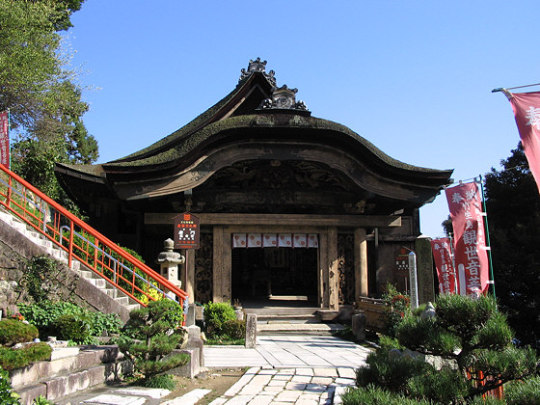
The Front Gate of Hōgonji Temple (宝厳寺) on Chikubushima Island in Nagahama, Shiga Prefecture, founded probably in the 8th century, with the gate itself dating to the temple’s 1602 renovation under the patronage of Toyotomi Hideyori (豊臣秀頼) using architectural elements donated from the shrine dedicated to his father Hideyoshi.
Image from a site featuring photos and short descriptions of each temple along the Thirty-three Temple Western Pilgrimage Circuit (西国三十三所) dedicated to Kannon Bodhisattva (観音菩薩), of which this is the thirtieth
#buddhist temple#滋賀県#shiga prefecture#長浜市#nagahama#竹生島#chikubushima#chikubu island#宝厳寺#hogonji#西国三十三所#真言宗#shingon#japanese architecture#japanese history#豊臣秀頼#toyotomi hideyori#唐門#karamon
18 notes
·
View notes
Text
! Spoiler Gudaguda7 event !
.
.
.
I created Hideyori(fate oc) short brown hair boy for new Gudaguda event, I hope Chacha will meet Hideyori and Tsurumatsu(Shusha) soon in this event. Like a happy time. Com’on official design please come out! I want them all together now!
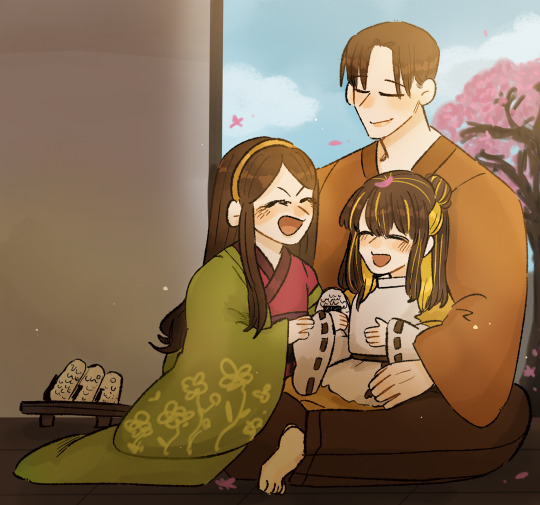




There are all doodles during event I did. Have Mitsunari and Gaheris little.
#art#my art#fanart#fgo#fate series#fate grand order#fate go#fgo fanart#fgo fate grand order#fgo fanart#chacha#fgo Chacha#fate chacha#lady chacha#fate oc#oc fgo#fgo oc#oc x canon#hideyoshi toyotomi#toyotomi hideyori#ishida mitsunari#fgo gaheris#gaheris
20 notes
·
View notes
Text
1615-Siege of Osaka

The siege of Osaka(大坂の役, Ōsaka no Eki, or, more commonly, 大坂の陣 Ōsaka no Jin) was a series of battles undertaken by the Japanese Tokugawa shogunate against the Toyotomi clan, and ending in that clan's destruction. Divided into two stages (winter campaign and summer campaign), and lasting from 1614 to 1615, the siege put an end to the last major armed opposition to the shogunate's establishment.


*(left) Toyotomi Hideyori (豊臣 秀頼, August 28, 1593 - June 4, 1615) was the son and designated successor of Toyotomi Hideyoshi, the general who first united all of Japan. His mother, Yodo-dono, was the niece of Oda Nobunaga.
*(right) Yodo-dono (淀殿) or Yodogimi (淀君) (1569 – June 4, 1615) was a prominently placed figure in the late-Sengoku period. She was a concubine and second wife of Toyotomi Hideyoshi, and Hideyori's mother, who was then the most powerful man in Japan.

* The fall of Osaka Castle: On June 5, 1615, Tokugawa attacked Osaka Castle, an attack known as "the summer Siege of Osaka". After another series of shogunate victories on the outskirts of Osaka, the summer campaign came to a head at the battle of Tennōji. The smaller force led directly by Hideyori sallied forth from Osaka Castle too late, and was chased right back into the castle by the advancing enemies; there was no time to set up a proper defense of the castle, and it was soon ablaze and pummeled by artillery fire.


Hideyori and Yodo-dono took refuge in a fireproof warehouse, as much of the castle was in flames. Ōno Harunaga sent Hideyori's wife, Senhime, with his father Hidetada to be forgiven, and to plead for the life of her husband and mother-in-law. Without waiting for answers, Toyotomi Hideyori and Yodo-dono committed seppuku in the flames of Osaka castle, ending the Toyotomi legacy.
The final major uprising against Tokugawa rule was put to an end, leaving the shogunate unchallenged for approximately 250 years.
#Jun.4.1615#date of death#Toyotomi Hideyori#Yodogimi#The fall of Osaka Castle#end of Toyotomi clan#history today
0 notes
Text
Shōgun Historical Shallow-Dive: Part 2 - Heir Crash Investigations
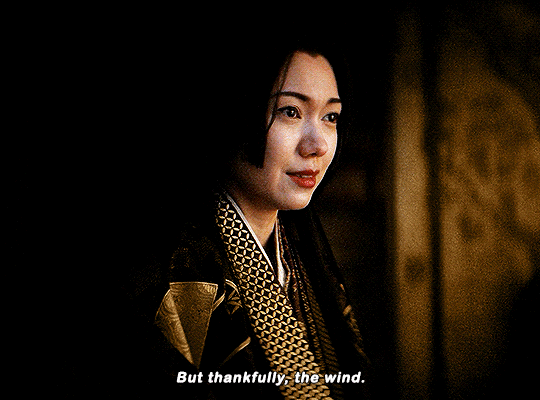
What happened to Ochiba no kata and Yaechiyo, the Heir, in history? This was the most requested topic for part two. Get ready for failson psych-outs, drag-king, diss-track action. None of that is a joke.
There is a very simple version of this story, and a very complicated version of this story. I'll try and split the difference, but again, if you're interested, best English-language high level overview of the period that is not horribly out of date.
Again! Not a professional historian, never did my PhD, so my opinion is going to colour this.
The simple version: Ochiba no kata in the Shōgun show is quite a departure from the historical Yodo-dono or Chacha. She did a lot of political manouvreing to try and get her son to regain the pre-eminent position in Japan, but ultimately lost out to Tokugawa's overwhelming political and military strength. Nobody knows if she died or escaped at the end of the siege of Osaka castle in 1615 (15 years after the show), so there are lots of cool folk tales about her.
The more complicated version:
Ochiba is depicted as a sneaky, conniving, scary lady who scratches out fate's eyes. Why? Short version, whilst she was a major magnate and power player during the period of the show and after, she was not a brilliant schemer. She also wasn't crazy malicious - she was trying to keep her son alive. Most of her plans came undone because of incompetence, not being a puppet master who bent men to her will with veiled seduction and threats. That's a later invention. (We'll come back to it at the end).
She was the dictator Koroda's (Oda Nobunaga's) niece, not his daughter. As far as is known, her and Mariko's real life counterpart, Hosokowa Gracia, did not hang out.
The real life Ochiba, Yodo-dono, became a nun after the Taiko (Toyotomi Hideyoshi) died. So... less sultry and cat-like, more pious, still an excellent political operator.
She stayed out of the war between the Regents and Toranaga/Tokugawa, and did send a letter to Toranaga/Tokugawa saying the Heir would remain neutral. This allowed the Eastern forces under Toranaga/Tokugawa to present Ishido/Ishida's mobilisation and war footing as rebellion against the Heir, and the Taiko's wishes.
After Sekigahara, Tokugawa (we're past the book now) claimed that he would be 'as a father' to the Heir - real name, Toyotomi Hideyori. Most of the Heir's former fervent supporters embraced the Tokugawa reign.
He didn't hate the Heir or want to knife him in his sleep. 'It must be emphasised that Ieyasu himself bore Hideyori no personal ill will. Although he had once been enemies with Hideyori's father, Ieyasu was sensible enough to acknowledge Hideyoshi's [the Taiko's] unique genius. He acted kindly towards the late Taiko's child.' (Chaplin, 511).
So how did they end up coming to blows? Ochiba no kata's real-life inspiration, Yodo-dono, was deeply suspicious of Toranaga/Tokugawa. She had her pride - expecting her son to inherit the Realm and all - and she was an excellent political operator in her own right. She wouldn't roll over and let Toranaga/Tokugawa throw all these plans away because of one battle between Regents. She stayed out of it to keep her options open.
Tokugawa was well on his way to implementing his unification of the realm plans, post-Sekigahara. He demanded that she and her son go to Kyoto to show they were good and loyal vassals. Yodo-dono refused on behalf of her, and her son, intuiting (correctly) that the Heir paying homage to Tokugawa would ruin what was left of the family claim. This certainly raised an eyebrow amongst the magnates who'd survived the civil war. To Tokugawa, this woman needed watching, as she was clearly not going to just accept that her son was just another daimyo now.
Once Tokugawa was made Shōgun, he installed one of his lackeys in Osaka castle to keep an eye on Yodo-dono/Ochiba, and the Heir. The lackey reported for a decade that the Heir was essentially 'effeminate' (his words) and a failson.
Tokugawa was fine with this. He was busy building a unified empire. He'd married his granddaughter-in-law to the Heir, and given away most of the Toyotomi (ex-Taiko) lands after the battle to lords that flipped to his side.
As far as Osaka went- Yodo-dono and the Heir - Tokugawa was, characteristically, waiting to see what would happen. He was hoping the whole Toyotomi 'remember how the Heir's dad was Taiko?!' thing would fade with time. Wishful thinking, but maybe the son of his late master would accept the way things were now.
Between 1601-1611, Tokugawa Ieyasu hadn't made up his mind to destroy the Toyotomi. After all, most of his ex-rivals were now scrambling to impress him by contributing the most money to ruinous castle-building programs he ordered, in order to keep them broke and squabbling amongst each other. Maybe Yodo-dono would guide the Heir to do the same?
Ding dong, daddy wants to check on his main political rival's kid! Tokugawa Ieyasu eventually remembered the Heir was still alive, and requested a meeting. Yodo-dono requested three Tokugawa hostages (three of Ieyasu's own sons!) before she'd agree to the meeting. She knew who he was, and she knew now what he was capable of.
Uh oh! In 1611, Tokugawa met the now 18-year-old Heir at a neutral castle and found him strapping, manly, and charismatic. His lackey had been lying to him! It turns out, the lackey keeping watch on Yodo-dono and the Heir had a soft spot for the Taiko, and had been deliberately telling Tokugawa not to worry about his son to try and prevent conflict. But this kid was dangerous. Dangerously awesome. If he impressed Tokugawa, there was a good chance he'd impress other busho and daimyo, drawing them to a faction to oppose the new Tokugawa rule.
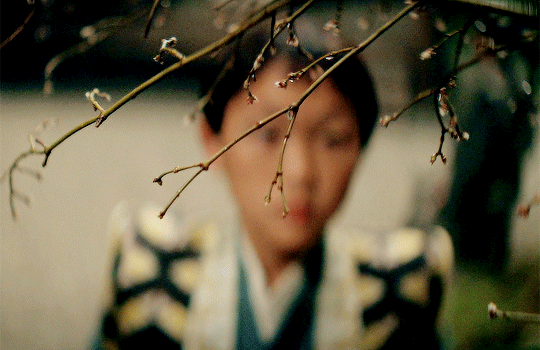
Rulers hate him! This little moron used time shut away in a castle to develop into a political threat!
It was at this point Tokugawa made up his mind to destroy Yodo-dono (her son's chief counsellor, and the political force behind a growing anti-Tokugawa movement), as well as the Heir. If you've read any history, a leader cementing power can't let remnants of the old regime hang around to act as a magnet for opposition. Especially if they are impressive and cool - Tokugawa was blown away by the boy's charisma and charm. So Tokugawa needed an excuse to take out the Heir. Any old excuse would do.
The excuse was lame, and arcane. The Heir's dad was famous for a sword hunt. Basically, the Taiko was a peasant who became a general who became a samurai, and wanted to pull the ladder up behind him. No non-samurai would be allowed weapons. No one was allowed class mobility anymore. You were what you were born, suck it, and a big part of that was confiscating weapons to ensure no more uprisings... like the Taiko had been a part of.
But because the Taiko was all about glitz, glamour, and what we'd now call virtue signalling, he was going to melt all of these swords down into a giant Buddha! It was a pious thing, honest! This buddha would be located at a temple called Hoko-ji.
It's 1614, and Yodo-dono has gathered a network of anti-Tokugawa daimyo, busho, and - importantly - samurai. Many samurai had been left masterless (ronin) after Sekigahara. Even those with lords had been transformed overnight from professional warriors to bureaucrats (we'll get to this in a later part). They were restless, out of work, and they flocked to her banner for the chance to get paid for their skills again, and lose the stigma of being masterless. With his ranks swelling, the Heir looked more and more like a viable political contender.
The Toyotomi, under Yodo-dono, with Hideyori as the pretty dashing figurehead, began to throw their weight around. They rebuilt Osaka castle's fortifications, and they forged a bell at Hoko-ji temple funded by the proceeds of Father's Great Sword Hunt. It wasn't any old bell though. It was a diss bell. Read in a certain way, the kanji inscription on the bell could be interpreted as breaking the Tokugawa in two, and 'may the Toyotomi rise... again?'
Tokugawa sent an envoy to Yodo-dono, asking that, given this insult, she and the Heir might consider relocating to another province. Say, a less central, less jewel-in-the-crown-with-an-impregnable-castle province. It'd help make up for the insulting bell, after all. The veiled threat was not very veiled. 'Leave while I give you the chance.'
This drew the battle-lines between those who still held out loyalty to the Taiko's clan (or who just hated the Tokugawa), and the Shōgun's forces. The former flocked to Osaka Castle and dug in.
That was enough for Tokugawa, who laid siege to Osaka Castle. Well, he was very old now, so he let his son - the Shōgun whose dad told him what to do - lead the siege. Assaulting the castle was a logistical nightmare, but luckily for Tokugawa and his fledgling Shōgunate, they outsourced much of the work to the lords who had pledged allegiance to the new regime (read: almost all of them). Keeping these lords poor - say, through funding hugely expensive military endeavours - was one of the ways Tokugawa Ieyasu and heirs exerted control. Ieyasu sat on a hill in a comfy tent while others bled gold (and blood) to build the expensive siege works and start the assault.
There were two sieges. One kinda worked, the second wasn't really a siege, but that's what they're called in the sources 🤷
The first siege was very much carrot-and-the-stick. Archers would loose arrows into the castle, with scrolls wrapped around the shafts, requesting the Toyotomi surrender. Politely. Poetically. It didn't work.
Tokugawa Ieyasu (Toranaga) tried bribing famous commanders inside the castle, including famed hunk-hero and coverboy of the Samurai Warriors games, Sanada Yukimura. He told Tokugawa to go fuck himself. Tokugawa tried bribing another general, who considered it, was discovered, and beheaded in Osaka Castle to encourage the others. 🙃
Yodo-dono started dressing up in samurai armor and walking the walls, in full view of the besieging armies. Her son's forces found this 'both unnerving... and condescending.' She was acting like a general, which pissed the generals off. She was also accidentally undermining her now-adult son, and sapping confidence from those who'd pledged to his banner. Read the room, lady. This doesn't seem to be malicious - this was just her first experience actually wielding power in an armed conflict. 'Although she feigned the image of a warlike Virago, she was in fact a cloistered and rather narrow-minded woman who understood little of what went on outside of her castle. As such, Ieyasu knew that she could be manipulated when the time came.'
What's the best way to manipulate someone? Fire cannon at them!

'And now for my most cunning plan. Blowing her up.'
Tokugawa ordered his son to focus cannon fire on the living quarters of Osaka Castle. Yodo-dono's quarters. Twice a day, every day. They were using cannon seized from Portuguese ships, and the gun-crews are likely to have been using training manuals originally drawn up by our old friend, the English pilot. He was off living his best life in Edo at the time. But he trained accurate gunners - one round shot hit Yodo-dono's quarters and nearly killed her. While she and her ladies were having tea. The gall.
This was enough for her. She ordered her son to make terms with the Tokugawa. This wasn't worth dying for.
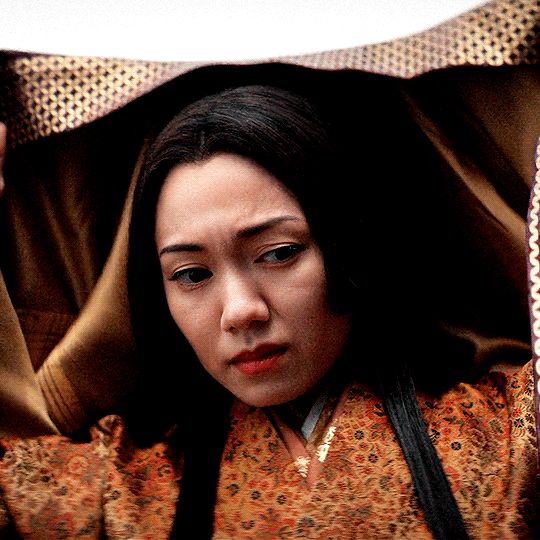
'Ugh, stop wrecking all my shit you fucking swine. That teapot was from Muji!' - Yodo-dono, 1615
Siege over! Can we be friends? Well, it's hard to go back from that. Tokugawa Ieyasu offered Hideyori/the Heir (well, really, his mom) two options: either Yodo-dono goes to Edo as a hostage to their family's good behaviour, or they agree to fill in the moat of Osaka Castle, making it less a fortress and more of a nice, big, open-plan house.
Option 2 was agreed, and Ieyasu issued a treaty document sealed with his own blood. The very obvious implication - don't fucking break it.
The Heir and Yodo-dono fucking broke it.
Urged on by his mother, Hideyori began to gather ronin (masterless samurai) back to his banner, re-dig the filled in moats, and gathered 120,000 fighting men to Osaka Castle. I forgot to mention how big this siege was, sorry. It was huge. And wouldn't you know it, many of these fighters were būsho, samurai, and ashigaru who were Christian. They saw the way the wind was blowing, and that the Tokugawa were getting wise to Portuguese intentions towards Japan. This might be their last chance (spoiler: it was).
The second siege (called the Summer Siege) began. From the Heir's side, it was much more ambitious than the first. The boy general, son of the Taiko, wanted to seize Kyoto, declare Tokugawa a traitor to the Emperor, and go on the offensive.
Unfortunately, like Sekigahara, many of the forces gathered in Osaka were there to oppose Tokugawa, rather than fight for one unified purpose. The war councils generally ended with disunity, and Yodo-dono kept interfering, which really, really was starting to wear thin with the Heir's vassals and allies. And the Heir himself. Imagine your mom turning up to work every day after you'd got a big promotion (Leader of the Western Armies). Not only that, your mom is literally coming to work in cosplay. The poor kid.
Long story short - Hideyori, the Heir, had no military experience. In a much-mythologised, last-of-its-kind battle between actual samurai - before they hung up their swords and became indentured bureaucrats - the Heir risked it all. His plan to sally forth and fight the armies of the Shōgun failed. They were beaten back by a contingent of 150,000 warriors under the Shōgunate, commanded by Ieyasu's son, Hidetada.
Key commanders were killed during the offensive, the Osaka forces lacked unity and cohesion (Sekigahara called, it wants its overarching lesson back). The Heir retreated back into Osaka Castle, but they didn't have a contingency plan and had few defences and obstacles established. The castle came under massive bombardment and constant infantry assault. The entire castle caught fire.
(Side note: a primary source written by a Dutch trader at the time said that generals loyal to the Heir set the castle on fire themselves, hoping to win favour with the Shōgun. Apparently, Hideyori discovered this and threw them off the ramparts into the flames. We'll probably never know whether that was true, but it's at least plausible.)
The Heir, Toyotomi Hideyori, and his mother, Yodo-dono - niece of Oda Nobunaga, most powerful concubine to the Taiko, most powerful woman in Japan - committed seppuku in the flames.
His body was found. Hers wasn't. You know what happens when this arises in history. There are folk legends that Yodo-dono escaped and lived a happy life in another province, but, hey, we all like a happy ending.

So if the inspiration for Ochiba no kata was a bit of a tone-deaf aristocrat nun who, whilst politically powerful, was not really a sexy, scary woman, how did we end up with Ochiba in the show?
After the Tokugawa defeated the Heir's forces, they had control of everything - eeeverything, including history books, plays, the works. What makes for a better story if you're on the winning side?
A mother was put in a terrible position when her husband, the ruler of the country, died. A group of men promised her husband they would place her son on the throne. One of them lied, stole the throne through force of arms and political savvy, and disinherited the son, despite the mother's best attempts. Her cause failed because she lacked the skills and authority to unify a movement, and her son was an untested youth who, in the end, just didn't have it.
The Heir's mother was an evil, scheming, sexually wanton (!) woman who destabilised the realm and got her son killed. She led them to disaster and without her, Tokugawa Ieyasu and the Heir would have gotten along fine! Her cause failed because she was a malicious harpy.
The Shōgunate chose option 2, and that's mostly the version we get in popular culture. It's hard to undo 260 years worth of character portrayal. Don't get me wrong, she was scheming, she was self-interested, but so was every major player in the period. She used her influence to gather support for her son, tried her best to overcome Toranaga/Tokugawa once she realised what he was, and she failed. To really send the moral message home, the Shōgunate cast her as a wicked woman, making her wickedness the reason she failed, not the complex factors that contributed to the downfall of the Taiko's clan.
So that's the story of Ochiba no kata's real life insiration, and what happened to the Heir - by far the most requested Part 2, and probably a bit depressing for Ochiba fans, unfortunately.
In Part 3, if there's any interest, we could look at the Dictator, the Taiko, and Toranaga and how they unified Japan, or we could look at a really interested question - what the hell happened for the 260 years of Tokugawa rule? How does it live on today (in some pretty dark ways) in the popular imagination? Your call.
#shōgun#shogun#shogun fx#john blackthorne#adaptationsdaily#perioddramasource#yoshii toranaga#akechi mariko#history#history lesson#japan#japanese culture#tokugawa ieyasu#fumi nikaido#lady ochiba#ochiba no kata#hiroyuki sanada
30 notes
·
View notes
Note
Hey Flame, just curious. Who would win in a fair fight between Wythela and Calmiel? ( no blessed weapon/armor, just pure raw skill, both in their primes)
Wythela.
She doesnt really have to focus on so many things and can dump all her stats into dueling lmao. Not only that, she is constantly on the move with her husband, and her skill hasnt dulled, only sharpened due to their adventures together. Gareth is actually the administrator between the two of them, he even taught Daerin, Adelina, and the rest of their siblings on how to govern well while growing up in their childhood.
Calmiel is a mighty warrior-queen, but her strength lies in being a balanced leader that could defend the kingdom while also introducing reforms without the kingdom collapsing into civil war whilst doing so.
It should be telling that Calmiel's death was the greenlight for the conspirators to kill Remiel's father and mother and push for a regency council with the young prince as a puppet.
Here, I took some inspiration from the Council of Five Elders during Toyotomi Hideyoshi's reign that were formed to guide his son, Hideyori. And like the Five Elders, there was a Tokugawa Ieyasu within their number, except our Ieyasu in KaE didn't win.
Their single greatest mistake was allowing Calmiel's choice of a bodyguard (Ur Batu) for Remiel through. Their thinking was that Ur Batu and his daughter could offer no real danger to their schemes as they were foreigners and had no allies they could call upon to help reinstate the prince to power. In fact, it was perfect for them to entrust the protection of the prince to someone that wouldnt so easily be able to do political machinations with the heir.
They uh, severely miscalculated.
Did Calmiel know this? Why did she entrust Remiel with Ur Batu? Why did Ur Batu even get involved?

Questions thatll be answered later!
41 notes
·
View notes
Text



Goto Matabei's Armor.
It was said that Goto Matabei (also known as Mototsugu) was born ready to fight. He was a much-respected professional warrior of the Sengoku period who often proudly boasted of the 53 scars on various parts of his body, trophies of the many wars in which he had participated.
Goto Matabei was recognised for his fierce bravery during Hideyoshi's Korean Campaigns, and fought at The Battle Of Sekigahara under Kuroda Nagamasa as a captain in the Eastern forces. Matabei was another of the samurai fighting under Tokugawa colors that day who would later side with Toyotomi Hideyori in Osaka.
He was killed in the Summer Siege of Osaka in 1615. During the Battle of Domyo-ji against the numerically superior troops of Date Masamune, Matabei was badly wounded by a bullet, and unable to stand, committed seppuku on the field.
This suit of Tousei Gussoku armor is said to have been one of many that belonged to Matabei.
17 notes
·
View notes
Text
Demon With in: The Origin of the Maeda-Clan: Part Three

Blog Post 3: Death
His death has been slew with mystery because he was only sixty-one, even though that could’ve been considered as old back then. But he had the demon blood running through his veins and he was still fighting in battles late in his fifties.
His wife suspected that he was poisoned by their son, Toshiie because of how he was obsessed with his father’s sword, the Ōdenta Sword which once healed his daughter from illness. And also his power which his father refused to share with him. Toshiie especially got angry when his father was chosen as one of the members of the council of Five Elders to support a young Hideyori Toyotomi.
Keijirō only stayed on the council for a year before dying.
In her writing, Mahana stated that Toshiie was always interested into insects, ever since he was a boy. When looking at her husband’s body she noticed a strange looking insect that she never saw before, crawling out from his ear. Toshiie told her it was a “Hi no mushi”(fire bug).
This is when her suspicions rose further.
It was said that Toshiie denied posing his father, stating he was the loudest to grieve his father.
When he became the head of the clan, Hideyori Toyotomi had died, splitting the family and country apart. His mother sided with Red Halo Army against his White Halo Army.
After the Battle of Sekigahara, Toshiie took the side of Tokugawa Ieyasu and had her in prison for fourteen years.
Toshiie committed suicide a year after his mother’s release.
He left a letter only saying that his mother was right.
This could mean two things; either it’s his confession to his father’s murder or a response to a letter that his mother sent him, telling that it was her sacrifice saved the family from being annihilated.
2 notes
·
View notes
Text
June 11: Himeji-jo
Today we traveled a few hours by train to Himeji, a former castle-town which houses Himeji-jo, a beautiful fortress which has been standing for 5 centuries.

Walking up to the castle was impressive because the city planners made sure that the castle was in plain view as soon as you exit the train station. Thankfully, this also made it really hard to get lost, so no one ended up getting left behind.
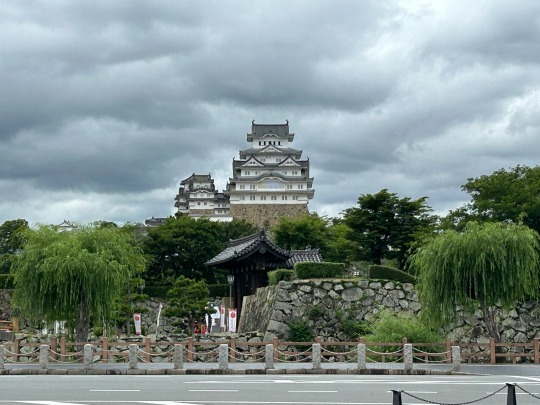
Once we entered the first gate, we headed up to the first keep which once housed the granddaughter of Tokugawa Ieyasu who married the lord of the land. Formerly, she had been married to Toyotomi Hideyori who was forced to commit suicide by Tokugawa for standing in the way of his ruling all of Japan. In this structure, there were numerous exhibits which had detailed histories of various rooms and artifacts, and we each spent a while looking at the ones that seemed interesting.


After exploring the keep, we headed further up the castle to the main keep which would have housed the local lord. The building was not only beautiful from the outside, but it was incredibly spacious on the inside. It probably would have taken us ten minutes just to get to the top of the structure even if we hadn’t been looking at the exhibits that were scattered about. (The view of the town was also very nice)

Going back down the castle, we visited the well of Okiku, which was named after a servant girl who was thrown down after misplacing her master’s expensive plate. The well is now said to be haunted by the ghost of the girl who is still counting plates and always stopping at nine before having to restart (there were originally ten plates).
After we were done at the castle, we all headed back to Kyoto and split up for the day.
Academic Reflection:
Today’s readings were about the castle towns of Japan and fortresses themselves. I’m mostly going off memory here so forgive me if there is a slight mistake, but in Europe, many towns began to form as peasants fled from their masters to form a middle class of tradesmen. This meant that towns in Europe were formed as a sort of way to escape feudalism, which is ironically the opposite of what happened in Japan. After the value of well thought out castles became known among the Daimyo, many towns ended up being formed, each around a fortress built on top of a mountain. This meant that the local lord played a central figure in the creation of the cities unlike in Europe which it was almost completely commoners who created the boroughs. These cities helped the Daimyo concentrate their power and maintain their defenses.
It was not too difficult to see today how a fortress such as Himeji-jo would be an incredibly valuable asset to a lord trying to maintain control of his land. Not only was the fortress on a mountain which would have been exhausting for armored troops to have scale, but each layer was designed to be easily defensible with watchtowers and ramparts to make it easier to spot and stave off invaders. This level of defense would make any enemy think twice before attacking the castle town, and the sheer size of the castle is an excellent display of the lord’s power.
2 notes
·
View notes
Text
Finally coming in to post the last chapter of the first arc before 12 am:

Chapter 13: Past, Present and what the Future awaits.


Hahaha, there is nothing more to say about this days, maybe the fact that it is said that Musashi never washed himself without his katana or clothes so as to never be taken advantage of or suddenly attacked on. Again I don't remember it that's was a rumor or if it was really true but it does sound like something Mushashi would do.
BUT ANYWAYS first arc is gone, main little tiny arc is gone and shall now be moved aside for the grand luxurious king of the second even tinier but important wedding arc and the then the other years and then the other years and then—God I wanna spoil but like can't, mustn't! As far as it is told the era has changed [a year ago] and new things have been made!
Next time it will be set in Bunroku 2 or 1593 *omg just as Toyotomi Hideyori is born but instead of a birth I wonder what this fic will bring~~*
Time for the epic clan battles!
The infamous clan leader to be met!
For the relationship to blossom even more!
The true enemies now linger oh so close!
And for the backstories to shine!! Shine I say! Will we get to learn about Shabana!? Or the Urokodaki's terrifying children!? The Kamado's secret!? Maybe even characters who had possibly started gathering their roots of a backstory as of now! Actions have consequences you know, so how many actions would and consequences would Giyuu and Sabito see and have to traverse through before they can finally have an era of peace?
Hmmm hmmm guess you'll just have to read :>
#kimetsu no yaiba#demon slayer#giyuu tomioka#kny#sabito#kny giyuu#fem giyuu#ao3 fanfic#sabigiyuu#kimetsu manga#that one sengoku mulan au fic#arc one done ahaha oh im having so much fun the lore has expanded and its all connected >:>
3 notes
·
View notes
Text
it always amuses me when a Shogun or someone like Hideyori Toyotomi has a Regent. Because like, they're already ruling on behalf of someone (the Emperor) and now someone is ruling on behalf of them. It would be funny if there'd ever been a point where you had a Regent for a Regent for a Shogun for an Emperor, but it never did get there.
0 notes
Text
I like how the character design are so similar to the historical characters they are inspired and based on. [Shogun 2024]
Anna Sawai as Toda Mariko (Hosokawa Gracia, the daughter of Akechi Mitsuhide, the man who betrayed Oda Nobunaga.)

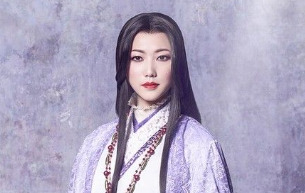
In the final trailer, she said, "a great injustice stole everything from me." is probably of what happened after her father kills Oda.
Akechi could no longer tolerate Oda's tyrannical rule and overthrow him. Toyotomi Hideyoshi (Oda's successor) hunts down Akechi and his entire supporters, army and family, to kill them all.
Takehiro Hira as Ishido Kazunari (Ishida Mitsunari, the loyal retainer of Toyotomi Hideyoshi, that opposes Tokugawa Ieyasu (Hiroyuki Sanada as Lord Yoshii Toranaga), leading to Sekigahara.
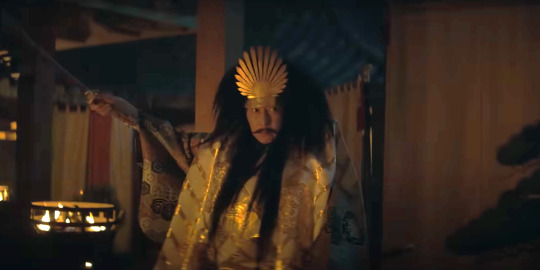
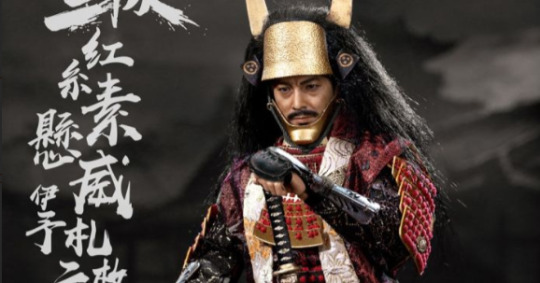
Toyotomi Hideyoshi late dies of old age and leaves his son, Hideyori, under the care of Ishida Mitsunari/Ishido Kazunari.
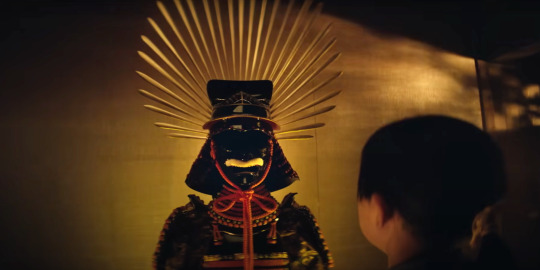

So far it looks pretty good, definitely better than Netflix's Age of Samurai, where the characters look nothing like the historical ones.
Looking forward to watching it!
youtube
#shogun 2024#shogun#shogun 1980#anna sawai#hosokawa garcia#akechi mitsuhide#oda nobunaga#toyotomi hideyoshi#takehiro hira#ishida mitsunari#toyotomi hideyori#sengoku#samurai#japan#hiroyuki sanada#tokugawa ieyasu#sekigahara#historical fiction#james clavell
29 notes
·
View notes
Photo

A pamphlet from Katano Jinja Shrine (片埜神社) in Hirakata, Osaka Prefecture, founded in 927 and rebuilt with funds from Toyotomi Hideyori (豊臣秀頼) in 1602
Acquired at the shrine July 3, 1994
#神社#jinja#大阪府#osaka prefecture#枚方市#hirakata#片埜神社#katano jinja#鳥居#torii#pamphlet#ephemera#printed ephemera#paper ephemera#crazyfoxarchives
17 notes
·
View notes
Text
The 13 Lords of the Shogun - Review
SPOILERS!!

In less than a week, far faster than I've finished any taiga drama, I have finished The 13 Lords of the Shogun. I was evidently addicted to this show, yet again, far more than any other taiga drama. Everytime an episode ended, I booted up the next. I juet couldn't stop.
Certainly there were times I paused it. But this is likely due to my short attention span, but I always came back soon after.
The actors were good; the music was great; there were emotional moments that even made me come close to actually crying.
My favorite fucking characters all died!
I don't know much of this period, so other than Kiyomori, Yoritomo, Yoshinaka, Yoshitsune, Go-Shirakawa, and Noriyori, I literally didn't know when anyone else died. I fucking LOVED Kazusa-no-Suke Hirotsune (Koichi Sato)! I fucking loved that old man, he was soo great! I was very upset when he was publicly murdered. I was heavily upset.
Then (or before) Yoshinaka (Munetaka Aoki), who I actually came to like, fucking dies. I knew he would die, but they made me like him! He was another favorite.
Then I liked Hatakeyama Shigetada because I'm a simp and liked Taishi Nakagawa as Toyotomi Hideyori in Sanada Maru. But on the subject of him, what was up with all the brow-raising he did. In almost every scene I saw him in, he had one brow raised. I don't know what that was about.
But he died too, so yeah. He has a great fight scene with Koshiro (Shun Oguri) that I really liked because... THE ARMOR WORKED! Every time that shit happens, I am happy!
Then my favorites were Wada Yoshimori (Eiji Yokota) and Minamoto no Sanetomo (Hayato Kakizawa). ...yeah they fucking died too. Obviously.
I just loved that old fool, Wada Yoshimori! He was the replacement Kazusa. Plus, my other favorite, Sanetomo, liked him. They were friends! Gods damn it all!
I also called it that Sanetomo (show-wise, as far as I know) was gay. He looked at Yasutoshi (Koshiro's son) way too fondly. Then the jealousy and the love poem. It was obvious.
I was, of course, biased toward the attractive, pathetic, gay twink. Very much so, haha!

I was very upset at Koshiro for killing them both. Even if Sanetomo's was more indirect. Wada was shot with arrows in front of Sanetomo after he, I believe, surrendered. Sanetomo was assassinated by his nephew, but Koshiro knew it would happen and did nothing. So yeah, fuck me.

Anyway, I loved how Koshiro slowly went from being upset and admonishing Yoritomo for his scheming and dark actions, to Koshiro doing the same thing so Hojo would stand on top of the samurai.
By the end, I did not support Koshiro's actions. I understood why he did them, but I did not support him, nor did I really like him by the end. I was upset to see him die, especially the way he did, but I still didn't like him anymore.
I liked Ama Midai's speech to rally the Bando samurai. I also liked when she switched from the white headdress to the purple headdress (whatever it may be called).

Now, Koshiro's fight with Hatakeyama. There was a moment where, if he wanted to, Hatakeyama could have killed Koshiro. There was a too-long pause during the fight. That's a no-no.
Yet again, not all humor landed with me. But the one with Yoshimori and Koshiro, where Yoshimori cuts off his eyebrow, was hilarious.
But anyway, despite all this, I personally give it a 6/10.
Now, do I think it deserves higher? Yes. This is why I changed it to 7/10.
7/10
Currently, my Taiga Drama ranking list has this show at either 3 or 4. Being above or below, Hideyoshi (1996).
I forgot! I loved Hatta (Hayato Ichihara) as well.
Also, they seemed to make the Minamoto bitches. Like Yoritomo: reprehensible actions and spoiled (at least in the beginning); Yoshitsune: impatient, dishonorable, bloodthirsty. He got better after the Genpei War, but not much; Yoriie: almost immediately he takes after his father and is a womanizer. He tries to take a gokenin's wife, and then when that doesn't work, he wants to execute the guy! What the fuck! The only good thing I can say about him is that he tried to rebuild his relatio ship with his concubine and died fighting. That's it; Sanetomo: I love him, but he's weak, way too weak. Being fair, he was always a puppet and hardly had the chance to take power. He also, fairly, sided with the Court in the West. But that is fair considering it was either them or Koshiro (who was reprehensible at this point). He also made the right decision for the wrong reason: Not making Tsurumaru (Koshiro's not "adopted son) a gokenin. Not because he hadn't done anything deserving of it, but because he hugged Yasutoki, whom Sanetomo had a crush on.
The only Minamoto I fully liked was Yoshinaka and his son, Yoshitaka. Perhaps I had nothing against Noriyori.
But yeah, that was it.
1 note
·
View note
Text
Events 8.23 (before 1900)
30 BC – After the successful invasion of Egypt, Octavian executes Marcus Antonius Antyllus, the eldest son of Mark Antony, and Caesarion, the last king of the Ptolemaic dynasty of Egypt and only child of Julius Caesar and Cleopatra.[citation needed]
20 BC – Ludi Volcanalici are held within the temple precinct of Vulcan, and used by Augustus to mark the treaty with Parthia and the return of the legionary standards that had been lost at the Battle of Carrhae in 53 BC.[citation needed]
79 – Mount Vesuvius begins stirring, on the feast day of Vulcan, the Roman god of fire.
476 – Odoacer, chieftain of the Germanic tribes (Herulic - Scirian foederati), is proclaimed rex Italiae ("King of Italy") by his troops.
1244 – Siege of Jerusalem: The city's citadel, the Tower of David, surrenders to the Khwarazmiyya.
1268 – The Battle of Tagliacozzo marks the fall of the Hohenstaufen family from the Imperial and Sicilian thrones, and leading to the new chapter of Angevin domination in Southern Italy.
1305 – Sir William Wallace is executed for high treason at Smithfield, London.
1328 – Battle of Cassel: French troops stop an uprising of Flemish farmers.
1382 – Siege of Moscow: The Golden Horde led by Tokhtamysh lays siege to the capital of the Grand Duchy of Moscow.
1514 – The Battle of Chaldiran ends with a decisive victory for the Sultan Selim I, Ottoman Empire, over the Shah Ismail I, founder of the Safavid dynasty.
1521 – Christian II of Denmark is deposed as king of Sweden and Gustav Vasa is elected regent.
1541 – French explorer Jacques Cartier lands near Quebec City in his third voyage to Canada.
1572 – French Wars of Religion: Mob violence against thousands of Huguenots in Paris results in the St. Bartholomew's Day massacre.
1595 – Long Turkish War: Wallachian prince Michael the Brave confronts the Ottoman army in the Battle of Călugăreni and achieves a tactical victory.[citation needed]
1600 – Battle of Gifu Castle: The eastern forces of Tokugawa Ieyasu defeat the western Japanese clans loyal to Toyotomi Hideyori, leading to the destruction of Gifu Castle and serving as a prelude to the Battle of Sekigahara.
1628 – George Villiers, the first Duke of Buckingham, is assassinated by John Felton.
1655 – Battle of Sobota: The Swedish Empire led by Charles X Gustav defeats the Polish–Lithuanian Commonwealth.
1703 – Edirne event: Sultan Mustafa II of the Ottoman Empire is dethroned.
1775 – American Revolutionary War: King George III delivers his Proclamation of Rebellion to the Court of St James's stating that the American colonies have proceeded to a state of open and avowed rebellion.
1782 – American Revolutionary War: British forces under Edward Despard complete the reconquest of the Black River settlements on the Mosquito Coast from the Spanish.
1784 – Western North Carolina (now eastern Tennessee) declares itself an independent state under the name of Franklin; it is not accepted into the United States, and only lasts for four years.
1799 – Napoleon I of France leaves Egypt for France en route to seizing power.
1813 – At the Battle of Großbeeren, the Prussians under Von Bülow repulse the French army.
1831 – Nat Turner's rebellion of enslaved Virginians is suppressed.[citation needed]
1839 – The United Kingdom captures Hong Kong as a base as it prepares for the First Opium War with Qing China.
1864 – American Civil War: The Union Navy captures Fort Morgan, Alabama, thus breaking Confederate dominance of all ports on the Gulf of Mexico except Galveston, Texas.
1866 – The Austro-Prussian War ends with the Treaty of Prague.
1873 – The Albert Bridge in Chelsea, London opens.
1898 – The Southern Cross Expedition, the first British venture of the Heroic Age of Antarctic Exploration, departs from London.
0 notes
Text
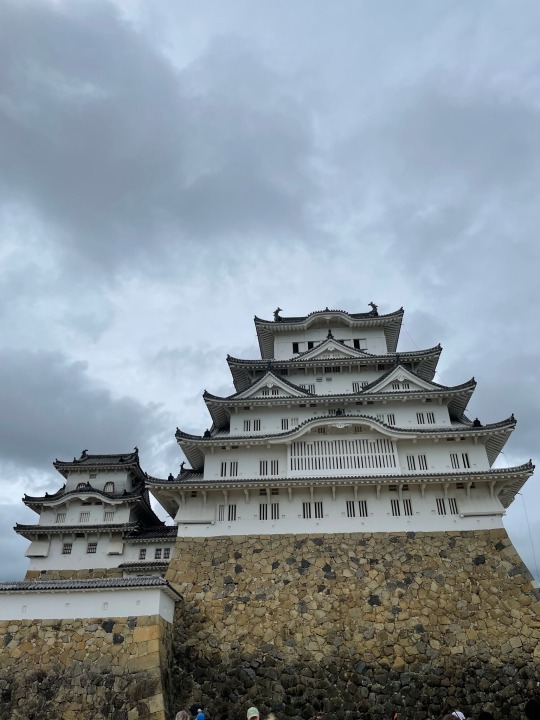
This morning I had western breakfast. It was toast, yoghurt, ham, eggs, and a salad. After breakfast, we met up again to discuss the readings. Then we went on a 2 hour train ride to see Himejijo, a castle that is a national treasure in Kyoto.
We first saw Princess Sen’s quarters, where she spent her time and got dressed, slept, etc. Then we went up the main keep that had 7 staircases with 6 floors and 1 basement. On the first floor there was a “Ishi otoshi” where soldiers would have dropped stones or shoot at enemies trying to climb the wall. On the second floor there was a “bugukake” or a weapon rack, where weapons like matchlocks and spears were placed, showing that the main keep was also used as an armory. The third floor had “Musha Gakushi” or a warrior hiding place where soldiers would be placed in secret compartments so they can ambush enemies. The top most floor had the Osakabe Shrine, where it protects Himeji Castle as the guardian deity of it. It was a long climb up the stairs but the views from the top were nice.
The most famous person who lived in Himeji castle was Princess Sen, the granddaughter of Tokugawa Ieyasu, the founder of the Tokugawa shogunate. She was married off at age 7 to Toyotomi Hideyori to keep peace between the two clans since they were known as rivals. However, the two clans fought when Princess Sen was 18, and her father gave her hand in marriage to anyone who could save her. She refused to marry her savior, and decided to marry for love and marry the heir of Himeji Castle. Although her husband and son died of sickness, it is interesting to know that she lived happy years as a woman during the warring states period.
It used to be thought that the daimyos had full control over the way castle towns were developed, because they have the most power considering that the emperor was mostly a figure head. However, although daimyo had some direction and authority over city layouts, many commoners settled where they wanted to and organically developed the cities. They even accommodated by relocating farms and temples to create more commoner districts. It is interesting how a solidified belief can be changed with further research and finding out the truth.
0 notes